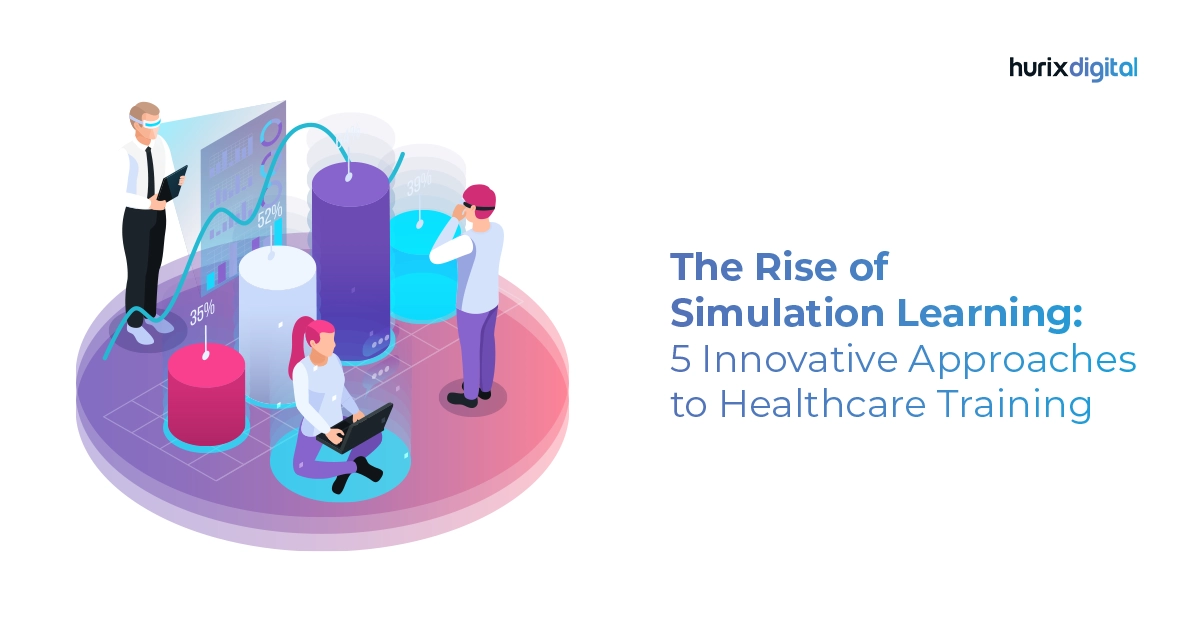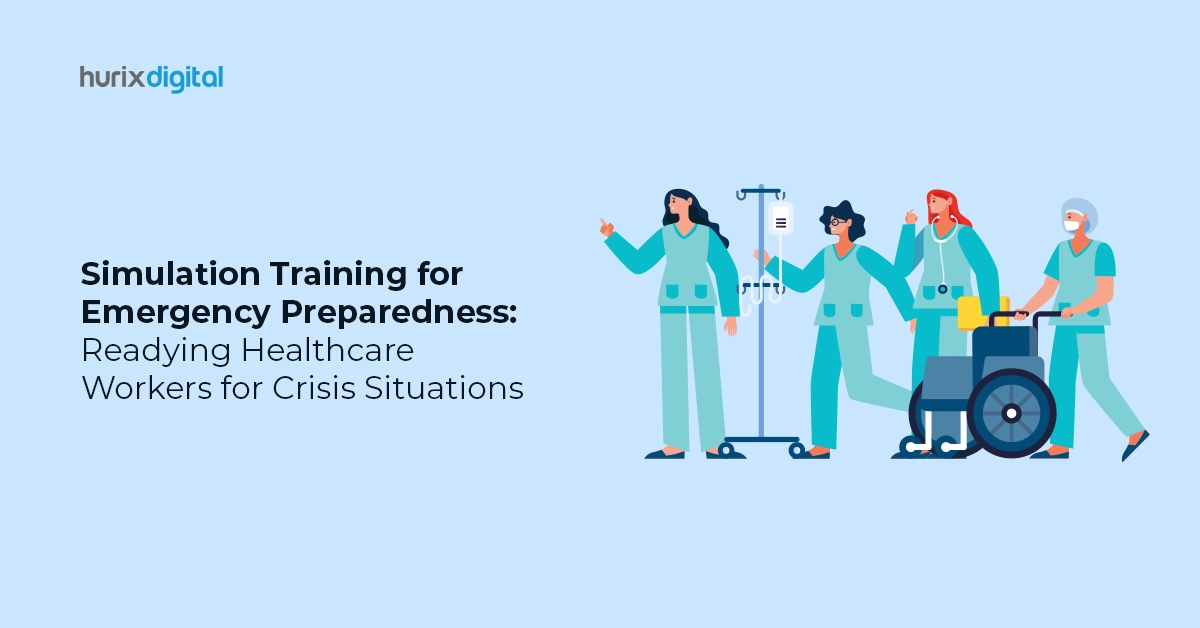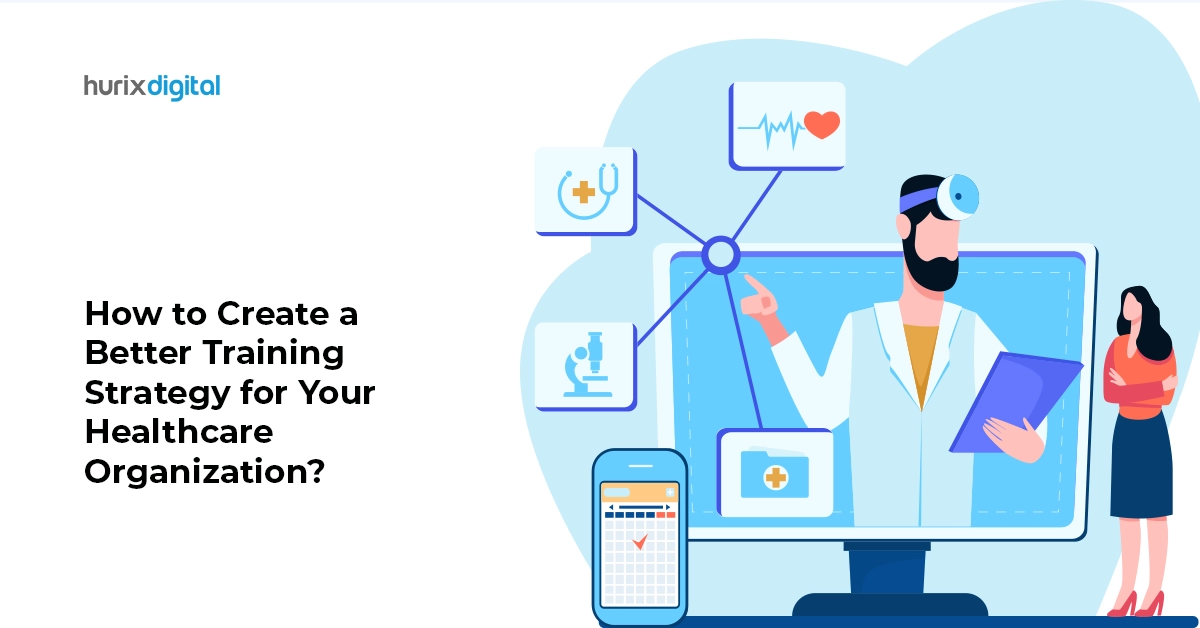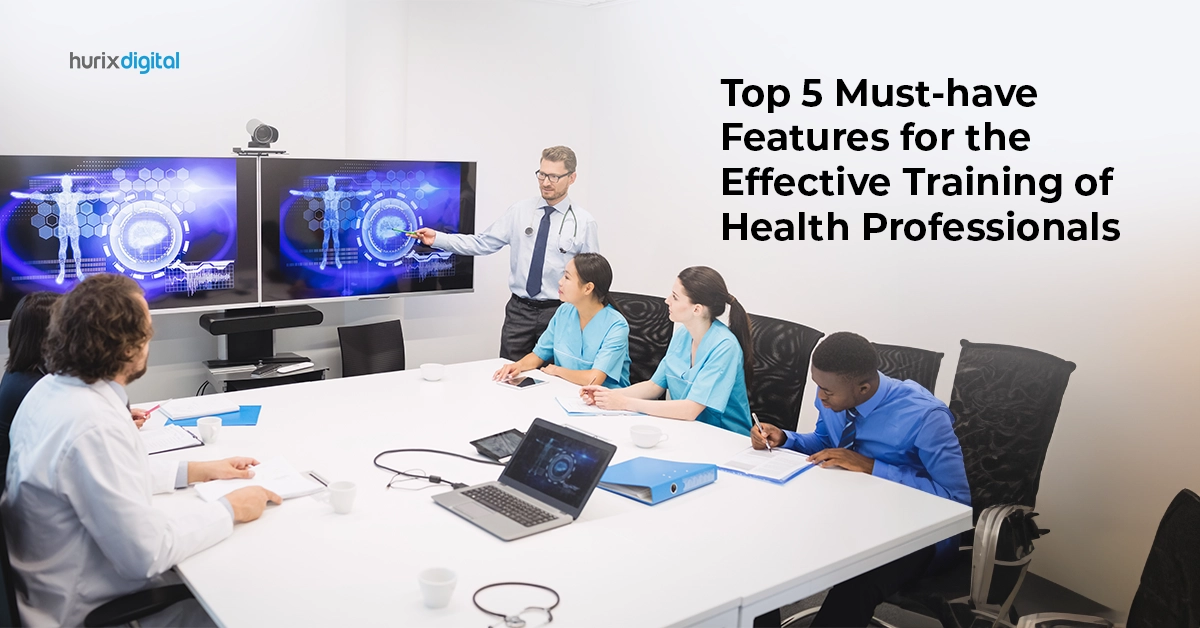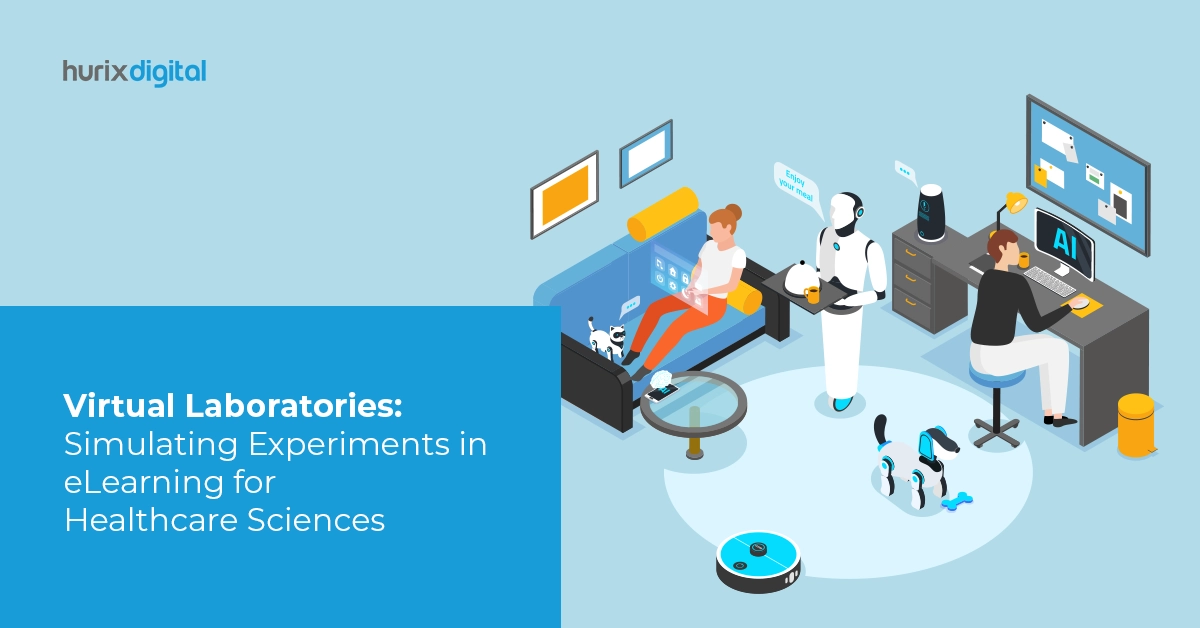
Virtual Laboratories: Simulating Experiments in eLearning for Healthcare Sciences
Summary
Explore the use of virtual laboratories in healthcare sciences education. This blog highlights how simulations can enhance learning and experimentation.
It’s not unexpected that the healthcare science industry is often called the backbone of healthcare innovations, as it plays a vital role in delivering healthcare services and enhancing the healing process overall.
Valued at a whopping USD 8,348.44 billion in 2023, the global healthcare service market has enormous potential, considering that innovative treatments, comforting hospitality, and dire cures are a constant need.
With this responsibility slowly being shared by the current and future generation of healthcare science learners, being able to conduct experiments seamlessly is crucial.
While traditional laboratories are available, problems such as availability and access are obstacles it cannot overcome without high-valued investments in scaling up.
That’s where taking the digital learning journey creates wonders. This article will introduce you to a new way of learning called simulation training, also known as virtual laboratories. It will discuss the problems it solves and mention some technologies that can improve skills quickly.
Table of Contents:
- Simulation Training and Virtual Laboratories: The Perfect Form of Education
- How Virtual Laboratories Jumpstart The Learning Journey
- Three Technologies That Enhance Virtual Laboratories
- Innovating Healthcare Learning
Simulation Training and Virtual Laboratories: The Perfect Form of Education
Simulation training is an education delivery method that digitally renders an environment or process where students can practice steps to learn how to perform a task.
Experience plays a big part in healthcare science and services. Incorporating simulation training in healthcare sciences tremendously increases its impact.
Here’s how simulations can help healthcare science students:
- Blending algorithms and software to mimic real-world healthcare scenarios in a safe, controlled environment gives rise to virtual laboratories.
- Medical virtual labs create simulations that allow learners to practice complex surgeries and gain experience in decisions like triage and emergency room scenarios.
- Virtual labs are the perfect form of simulation training as they provide immersive learning experiences before stepping into a physical lab or clinical setting.
Also Read: How Data Mining is Revolutionizing the Healthcare Industry?
How Virtual Laboratories Jumpstart the Learning Journey
With a clear idea of virtual laboratories and simulation training, let’s understand their actual impact on the learning journey in the healthcare science field.
1. Numerous Iterations Facilitate Numerous Ideas
Simulation training, such as virtual labs, is based on the idea that the more you practice, the better you perform.
- Students can practice multiple times in these virtual environments, which helps them come up with different ways to solve problems.
- By exploring various solutions, they learn which approach works best depending on the resources available, preparing them for real-life situations.
2. Mitigating Risk and Harm
Laboratories also carry the risk of accidents; in fact, research indicates that there is a 45% chance of an accident in laboratories.
- Through simulation training, like virtual laboratories, each practice session can be completed risk-free.
- With this in mind, learners can perform tasks without worrying and with more confidence.
- Along with being able to practice freely, learners also grasp results and enhance their skill sets faster.
This ultimately leads to steadier and calmer responses in a real-world setting.
3. Saving Costs and Optimising Resources
The investment costs for a physical laboratory range between 20,000 and 100,000 dollars.
In contrast, developing a virtual lab proves to be significantly more cost-effective due to its scalable nature and reduced infrastructure requirements.
- Virtual labs eliminate the need for expensive equipment, physical space, and ongoing maintenance associated with traditional labs.
- Additionally, digital labs are environmentally friendly as they reduce the consumption of materials and energy associated with physical laboratories.
4. Unlimited Availability
Healthcare virtual labs go beyond availability and access limitations by offering unrestricted access from any location, without causing scheduling conflicts or hindering other learners.
Accessing simulation training is possible at any time, requiring only minimal platform familiarization and device compatibility as prerequisites.
Three Technologies That Enhance Virtual Laboratories
The advantages of virtual laboratories are almost never-ending. To get the most out of the training approach, it is also crucial to infuse cutting-edge technologies.
Here are three innovative approaches that use the power of technology to deliver maximum impact:
1. Experimenting with the Power of AI
Powering your simulation with Artificial Intelligence (AI) can introduce the potential of adaptive learning into your practices. AI algorithms also contain Machine Learning (ML) models that take in data, learn what is needed, and refine learning modules.
While AI has a vast scope in healthcare, it is a game changer when applied to simulation training.
AI can use data from your surgical or problem-solving simulations to make small adjustments or add challenges. This helps enhance your strengths and tailor simulations to target your weaknesses.
2. Realistic Simulations with AR
Knowing how to react, conduct, and improve procedures in a real-world setting is crucial. One of the gaps that learners face in traditional laboratories is that what they practice does not fit the final environment.
AR-powered simulation training helps minimize this gap.
- Augmented Reality (AR) is a technology that projects digital data into reality.
- It is tremendously helpful in learning if the final procedure or experiment is performed in a limited space with multiple functions or stakeholders.
- Through interactive AR, learners could seamlessly perform experiments and procedures on a projected object or by projecting interactive tools into a room. This enables learning without distancing them from the final environment.
3. Life-like Experiential Learning with VR
Experiential learning has a high impact because it engages multiple senses, which is where practice is most retained.
Virtual Reality (VR) is one of the best technologies to incorporate this aspect.
- VR is a technology that immerses a learner in a life-like environment by engaging multiple senses. It is most often delivered with the help of headgear and handheld gadgets if needed.
- VR-powered simulation training fosters higher retention and engagement levels and can be designed to deliver a larger range of procedures and training compared to the other technologies.
Also Read: Healthcare Access for All: Navigating USA’s Digital Accessibility Standards
Innovating Healthcare Learning
Educational institutions must implement innovative simulation training methods for a more efficient, cost-effective, and risk-free learning environment.
When virtual laboratories and other simulation training embrace technology like VR, AR, and Adaptive AI, a learner’s growth rate and the quality of e-learning are profoundly elevated.
Hurix Digital specializes in integrating virtual laboratories into e-learning programs, offering tailored solutions to enhance practical learning experiences and optimize educational outcomes.
With their expertise, they ensure seamless implementation, empowering learners with interactive and immersive virtual lab environments. Contact us now to get started!

Senior Vice President – Business Development
Over 25 years of experience in the edtech and workforce learning industry with strong skills in Business Development, Customer Relationship Management (CRM) and Strategy.
